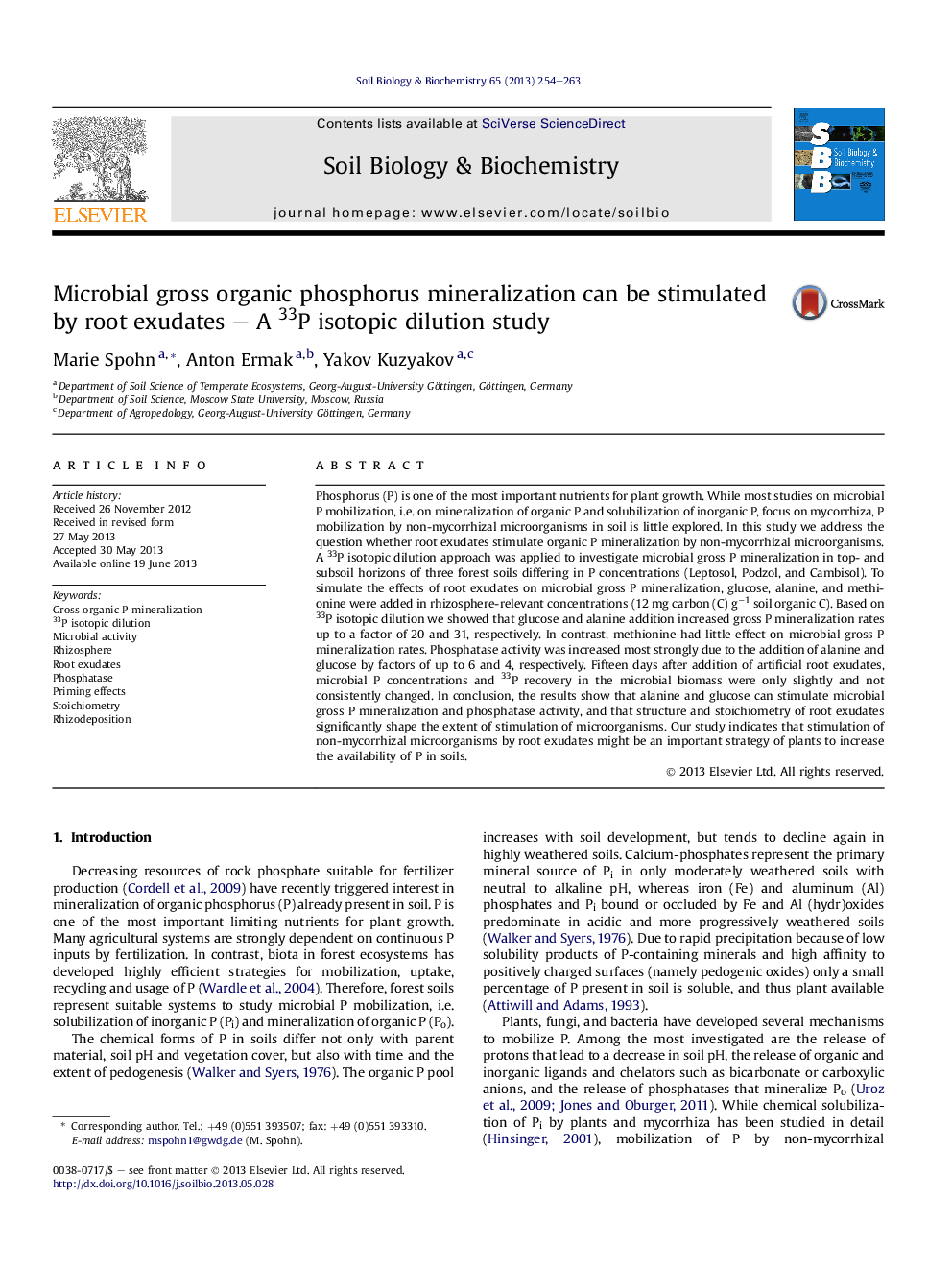| Article ID | Journal | Published Year | Pages | File Type |
|---|---|---|---|---|
| 8365221 | Soil Biology and Biochemistry | 2013 | 10 Pages |
Abstract
Phosphorus (P) is one of the most important nutrients for plant growth. While most studies on microbial P mobilization, i.e. on mineralization of organic P and solubilization of inorganic P, focus on mycorrhiza, P mobilization by non-mycorrhizal microorganisms in soil is little explored. In this study we address the question whether root exudates stimulate organic P mineralization by non-mycorrhizal microorganisms. A 33P isotopic dilution approach was applied to investigate microbial gross P mineralization in top- and subsoil horizons of three forest soils differing in P concentrations (Leptosol, Podzol, and Cambisol). To simulate the effects of root exudates on microbial gross P mineralization, glucose, alanine, and methionine were added in rhizosphere-relevant concentrations (12Â mg carbon (C)Â gâ1 soil organic C). Based on 33P isotopic dilution we showed that glucose and alanine addition increased gross P mineralization rates up to a factor of 20 and 31, respectively. In contrast, methionine had little effect on microbial gross P mineralization rates. Phosphatase activity was increased most strongly due to the addition of alanine and glucose by factors of up to 6 and 4, respectively. Fifteen days after addition of artificial root exudates, microbial P concentrations and 33P recovery in the microbial biomass were only slightly and not consistently changed. In conclusion, the results show that alanine and glucose can stimulate microbial gross P mineralization and phosphatase activity, and that structure and stoichiometry of root exudates significantly shape the extent of stimulation of microorganisms. Our study indicates that stimulation of non-mycorrhizal microorganisms by root exudates might be an important strategy of plants to increase the availability of P in soils.
Keywords
Related Topics
Life Sciences
Agricultural and Biological Sciences
Soil Science
Authors
Marie Spohn, Anton Ermak, Yakov Kuzyakov,
